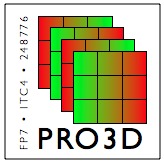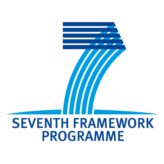Design Space Exploration for 3D-Stacked DRAMs
Weis, C. and Wehn, N. and Igor, L. and Benini, L.
Design, Automation Test in Europe Conference Exhibition (DATE), 2011.
3D integration based on TSV (through silicon via) technology enables stacking of multiple memory layers and has the advantage of higher bandwidth at lower energy consumption for the memory interface. As in mobile applications energy efficiency is key, 3D integration is especially here a strategic technology. In this paper we focus on the design space exploration of 3D-stacked DRAMs with respect to performance, energy and area efficiency for densities from 256Mbit to 4Gbit per 3D-DRAM channel. We investigate four different technology nodes from 75nm down to 45nm and show the optimal design point for the currently most common commodity DRAM density of 1Gbit. Multiple channels can be combined for main memory sizes of up to 32GB. We present a functional SystemC model for the 3D-stacked DRAM which is coupled with a SDR/DDR 3D-DRAM channel controller. Parameters for this model were derived from detailed circuit level simulations. The exploration demonstrates that an optimized 1Gbit 3D-DRAM stack is 15× more energy efficient compared to a commodity Low-Power DDR SDRAM part without IO drivers and pads. To the best of our knowledge this is the first design space exploration for 3D-stacked DRAM considering different technologies and real world physical commodity DRAM data.

